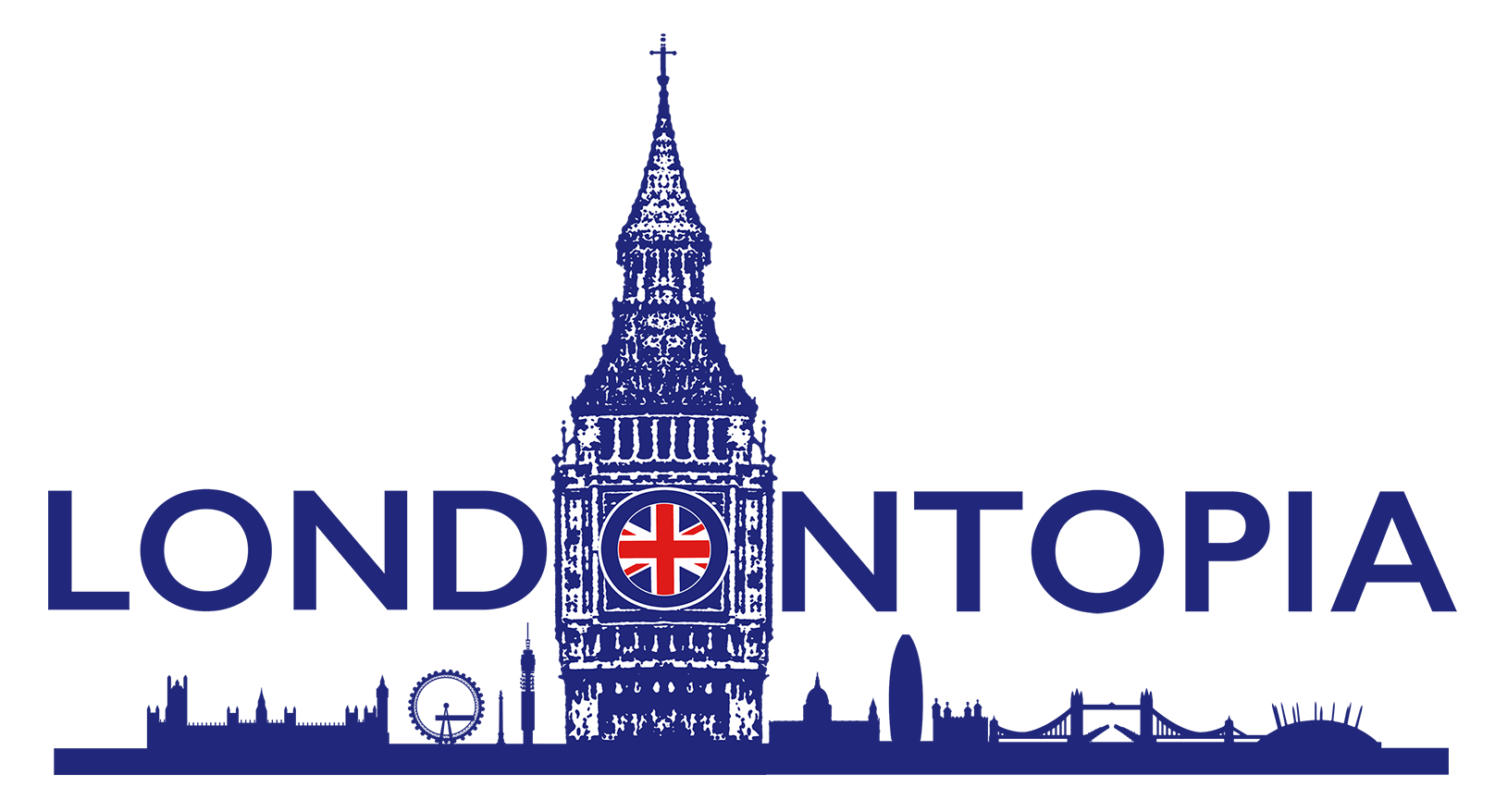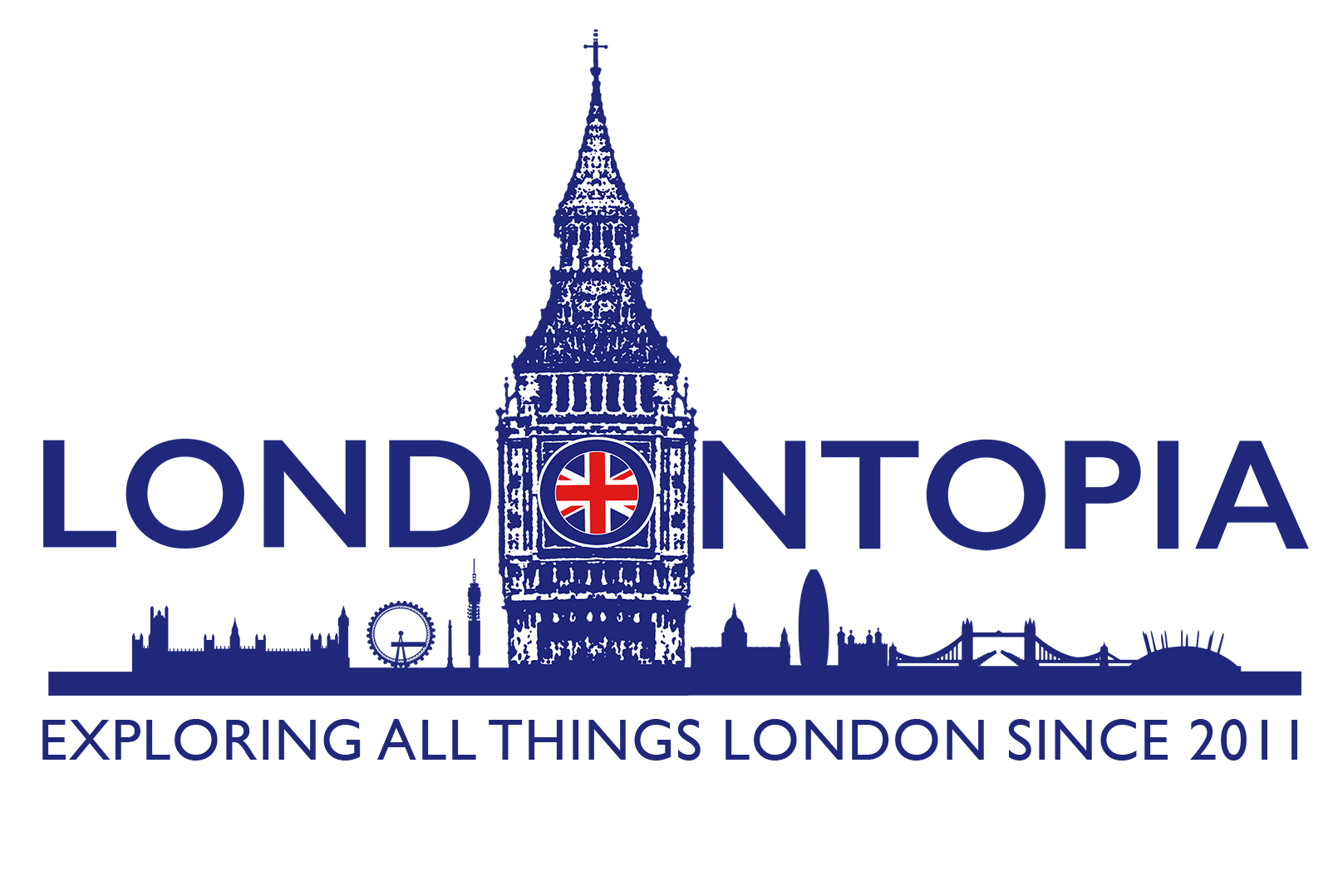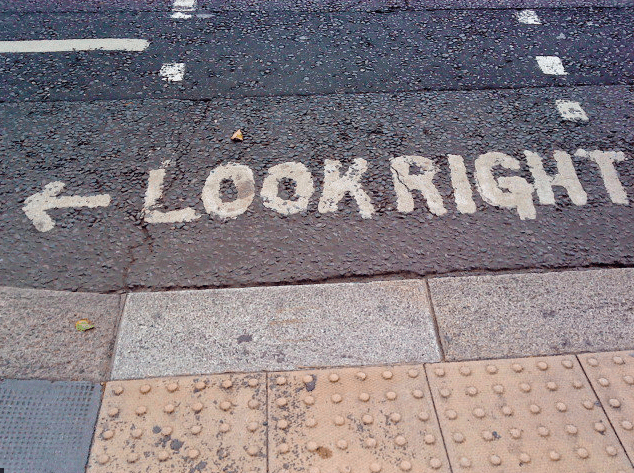I love to walk in London. It’s so wonderful to see the historic buildings mixed in with the modern, and you can really feel the change in area dynamics walking from the West End to the City or Southbank to Camden Town. On those days when it’s pleasant (that is, not raining), you can even look up and see the nice big trees in the park. There is, however, one sure way to ruin a nice walk: almost getting run over.
It is very, very difficult to be a pedestrian in London. It takes a while to learn another country’s traffic rules, and here they seem to be particularly enigmatic. New York has the very convenient “safety in numbers” crossings where once enough people have formed a throng at an intersection, they just cross. Chicago does this more cautiously, waiting for the light to change and then scurrying across until at least 15 seconds after it’s gone green again. Beijing is a city of sprinters. They have 8-lane roads and about five seconds of crossing time. In Paris (as usual) I could not discern any particular order – people just seemed to cross when they felt like it. As expected, crossing in Austria is very polite and regulated, and their very adorable bike lanes even have their own signals at bike-level. Salt Lake City may have the most pedestrian-friendly city: pedestrians can cross anywhere as long as they pick up a little orange flag to indicate that they’re walking.
Perhaps it’s because I’ve only visited most of these places as a tourist that I didn’t notice the serious dangers of crossing the street, but here they are striking. Here are a few tips to help you get around.
- The cars are on the other side of the street! One of the scariest things about being a foreign pedestrian is that the cars come from your right. Fortunately, the crossings are painted with a “LOOK LEFT/RIGHT” sign complete with an arrow. However, I’ve found a few that are wrong.
- Only cross at the zebras! The zebras (pronounced ZEH-bra, not ZEE-bra) are white horizontal stripes painted on the road indicating where it is safe to cross. These crossings will have a ramp to the sidewalk for those in wheelchairs and are surrounded by paving stones with little bumps. I first thought the bumps were to trip me up in high heels, but it turns out they’re so blind people can find the edge of the pavement (that’s a sidewalk in American). Cars are required to stop at zebras; however, I’ve seen some wayward bicyclists plow on through. I’m not sure of the exact rules, but I believe it may be illegal for a car to go through if you’re about to cross.
- There are also non-zebra crossings – these have all the makings of a crossing but without the stripes. The rule for these is “cross if you don’t see a car, but know that they won’t stop for you.” They often have a little oval of pavement in between the lanes in case you can only cross halfway and need a safe place to pause.
- Traffic lights: These often have zebras all around them. The light-change system here is still mysterious: in some places each side takes turns crossing, and in others cars and pedestrians alternate (except for cars turning).
- Sometimes traffic lights don’t have zebras. Watch out for these.
- I don’t know the legality of crossing at an unmarked space, but it seems to indicate a death wish on the part of the pedestrian. I swear that taxis speed up when they see me jaywalking, and I don’t think it’s just the Doppler effect – I know what a revving engine sounds like!
Now that you know how to be safe, here are some nice walks around London! There are dozens of walking tour companies, but I always think it’s best to just explore and go where the mood takes you. In addition, all these walks are absolutely free!
- London’s parks: While many, like Russell Square, are the size of a city block and work well for a post-lunch stroll, a few are quite a bit bigger. Hyde Park (which is connected to Kensington Gardens) is 625 acres! It’s a lovely city park with running, biking, and riding trails, a pond, and its own royal palace. Primrose Hill is just as adorable as it sounds and offers a great view of the whole city. Hampstead Heath is more wild and nature-y; people go there to jog, swim in the pond, or illegally pick mushrooms (this destroys the ecosystem! Don’t do it!) There are plenty of others scattered around town.
- Southbank: Literally, the embankment on the south shore of the Thames. You can start the walk at Westminster bridge and walk all the way to Tower Bridge, a good 2.5 miles. Along the way you’ll see Parliament and Big Ben, the London Eye, the National Theatre, all the important bridges, the Tate Modern, and the Globe Theatre. If you like you can end the day at the Tower of London or cut out early and see St Pauls (except on Sundays when it’s closed for worship).
- West End to East End: Start at the westernmost part of Oxford Street, London’s biggest shopping avenue, and go east. You’ll walk through Bloomsbury, Holborn, the City (demarcated by streets with trade names: Bread, Poultry, Ironmonger), and past the Museum of London. If you keep going, you’ll end at Aldgate and Brick Lane, the heart of London’s curry district.
- Jack the Ripper walk: This walk takes you on a winding path around the Whitechapel area, where Jack the Ripper committed gruesome murders in 1888. Unless you go on a tour you’ll have to be a pretty good map reader, but my favorite version of this ends up at Brick Lane for curry, of course. You’d visit Mitre Square and the Prostitute’s Church, Dutfield’s Yard and Miller’s Court, and of course the famous Ten Bells pub, where they won’t serve you if you mention Jack.
- Neighborhood walks: Pick a neighborhood. Take out your map. Explore!
A Little Bit of London In Your Inbox Weekly. Sign-up for our free weekly London newsletter. Sent every Friday with the latest news from London!





sounds frightening. maybe i’ll take a cab instead.
A great piece of advice I was given on my first trip to London last summer: Don’t follow a local across the street. A couple of times, I would mistakenly start across a zebra when I saw people around me going. But they were locals who had the experience and timing to take the risk. It’s hard not to think you can cross when you see other people doing it. But I quickly learned to absolutely wait for the light AND to make sure the cars actually stop. Even then, a healthy amount of fear is a very good thing.
Yes, definitely!
On our trip to London in ’07 we walked all over the city. Definitely took our time crossing the streets. Nice post with sage advice.
Being from NYC definitely does not prepare you for walking in London. But like you said, when you are visiting a country, it is not the same as when you are a local. Given time, I suspect it is something that I would be able to get used to.